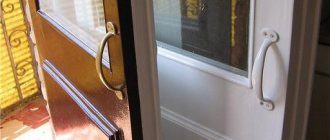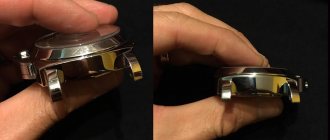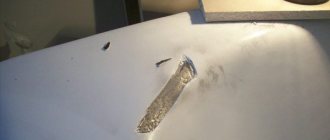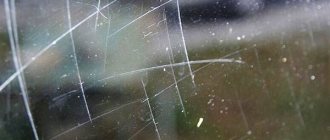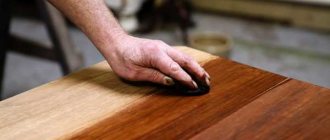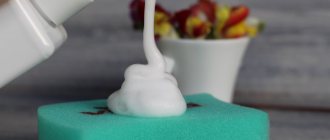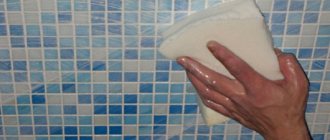Restoration of veneer doors with various types of damage
Veneered doors are attractive both in cost and in appearance, but over time the outer decorative layer may lose its former beauty. What to do if a deep crack appears in the most visible place of the veneer, or the veneer begins to swell? Restoring interior veneer doors is a simple procedure that can be done at home using simple products and tools.
How to remove scratches from iron sheet
The following substances will help remove severe damage from a metal door:
- Putty.
- Special mastic. The product is an analogue of cold welding.
- A sander will polish the edges of the scratch and remove its depth. Then the surface is treated with a primer. After drying, paint is applied.
- Silicone spray.
There are many ways to disguise varying degrees of damage to interior doors. It is necessary to select products in such a way that they match the color of the wood and the texture of the surface.
Frequent defects in veneer surfaces
The decorative veneer layer may swell and crack. Why does this happen, and what can be done to prevent defects from occurring and eliminate them? Let's consider the nature of the most common damage to veneer surfaces and the reasons why they occur.
- Areas of scuffs and scratches on doors appear, most often, due to improper hygienic care of the doors. It is unacceptable to clean the surface using products containing abrasive particles or dissolving chemicals.
- Cracks and chips are the result of careless handling. Veneered doors should not be slammed too hard. If you need to carry a large object through the door, you need to protect the door from damage, or even better, temporarily remove it from its hinges. Another reason why the veneer layer can crack is sudden changes in temperature and humidity.
- Swelling of the decorative coating can occur from high humidity. The lower part of the sash often swells and gets wet when washing the floors.
The reason for the appearance of defects on the surface can also be the dishonesty of the manufacturer - the use of low-grade material, violation of technology. It’s good if the product has a warranty and you can replace it. If the warranty has already expired, then the choice is small: buy a new door or make repairs.
Decor options in various colors
To remove scratches on doors with a dark finish (for example, wenge), machine oil is suitable. Using a cotton swab, apply used machine oil to the scratch and allow the oil to absorb. After a few minutes, wipe the damaged area with a rag. This method is not suitable for light-colored coatings.
If the doors have a beige, woody or brown tint, you can use olive oil. The principle of use is similar to machine oil.
It is better not to experiment with light and white doors, and use professional putties and furniture markers and strokes.
Repair of veneer doors
Restoring veneer doors depends on the nature of the damage. To repair the door, it is recommended to remove it from its hinges and lay it on a flat surface.
Removing minor abrasions and scratches
If shallow scratches and abrasions are found on the door leaf, a wax pencil or liquid wax will be required for repair. The restoration process will proceed as follows:
- The entire surface of the door must be cleaned of dust and dirt.
- Problem areas can be very easily and carefully treated with fine-grained sandpaper so as not to remove the varnish layer.
- If wax is chosen for repair, it is heated, after which drops of molten wax are applied along the length of the entire scratch or on the area of abrasion. Immediately remove excess with a soft cloth.
- If the restoration is performed with a wax pencil, you need to break off a small piece from it, warm it in your hands, knead it well, then spread it over the damaged surface. Remove excess with a cloth.
It is important! After restoration using wax in any form, the surface must not be coated with varnish or paint. Over time, the wax loses its strength and crumbles, and the varnished door leaf will be damaged.
There is another interesting way: the drawing is restored with oil paint. The difficulty lies in the exact selection of the desired shade and the need to wield a brush. After cleaning, apply a thin layer of oil paint to the area to be restored and rub it into the damaged surface. Then you need to draw lines with a thin brush, reminiscent of the veneer pattern. After all defects have been masked on the canvas, it is necessary to polish the door with silicone grease so that the surface acquires a uniform shine.
Repairing large chips and cracks
If deep defects appear on the door leaf that cannot be restored with wax, you can install a patch made of veneer that has the appropriate color, pattern and texture. The difficulty lies in selecting a patch pattern that fully matches the area where it will be installed. The process goes in the following order:
- In the area to be restored, it is necessary to cut out part of the damaged veneer.
- An element of the future patch is applied to the prepared recess, the position in which the veneer pattern will match is selected, and cut to size.
- Gluing the patch is not difficult; for this you can use a paper strip with an adhesive base. You can also use PVA glue.
- The patch is masked around the perimeter with a wax pencil.
If the depth of the chip is very large, it is first leveled with wood putty. After drying, rub it with sandpaper, prime it, and only then begin to apply the patch.
Restoration of a swollen surface
If the veneer is swollen, it will have to be glued. To do this you will need an iron and a damp cloth. The iron is set to medium heat. The door leaf is first covered with a damp cloth and left for 10 minutes. Then a hot iron is applied to the surface for just a few seconds.
Deep renovation
Sometimes the damage to the veneer covering is so serious that it is necessary to replace its damaged parts. But it’s still better than buying new doors. It is worth taking care of the material - pieces of suitable veneer from which the “patch” will be made.
Do-it-yourself deep restoration of veneer doors takes place in the following sequence:
- Veneer is a thin layer of protective and decorative coating, so cutting it is not very difficult. The place where there is serious, noticeable damage must be carefully cut out.
- Make an element of suitable size from spare material. It is important to ensure that the pattern matches as much as possible, otherwise the insert will be noticeable. Therefore, you should attach a piece to the canvas and see how it looks up close and from afar. Veneer can be cut with a sharp knife or scalpel.
- If the patches fit, they are fixed to the canvas with glue. Regular PVA will come in handy.
After the restoration of interior veneer doors has been carried out with your own hands, it must be completely coated with varnish intended for veneer. If, after cutting out the damaged coating, there are chips or irregularities underneath, then they must first be puttied. After the composition has completely dried, you can glue the patches.
How to quickly and easily remove scratches from furniture
Scratches on your favorite furniture, especially if it is new, can very easily ruin our mood. And when rearranging or moving, your favorite furniture very often gets scratched in the most visible place.
You may have never even thought about it, but masking or removing scratches on wooden furniture is very easy and simple; you can do it yourself at home using the simplest means at hand.
So, let’s look at all the options for home treatment for scratches on your favorite furniture:
Products to help!
Nuts
Strange as it may seem, walnut is very often used to cover up scratches on wood. We cover the scratch with a walnut without the use of physical force and immediately remove all excess with a soft, dry cloth so that the wood does not absorb too much juice and there is no stain left on the furniture.
Mayonnaise
Cracks in wood flooring can be treated with mayonnaise. The most popular sauce is also useful in home furniture restoration. Fill small cracks with mayonnaise, wiping off excess sauce and leave in this state for several days. The excess protein and oil contained in mayonnaise will be absorbed into the wood, it will swell and close small cracks on its own. After 2 - 3 days, remove the mayonnaise that has not been absorbed and polish the surface with a soft cloth.
Lemon
With a solution of lemon and vegetable oil, first applied to a clean, lint-free cloth, you can polish small scratches on a wooden surface.
Steeply brewed tea can also be used to paint over scratches; the longer you brew it, the darker the final color will be. You need to apply it very carefully so as not to overdose the scratch, otherwise the wood will absorb too much of the painted liquid and a stain may form.
Instant coffee
From one tablespoon of coffee, adding warm water, make a thick paste. We fill the scratch with this mixture, avoiding contact with entire areas of the coating. Remove excess with a dry cloth.
Whatever type of home restoration of wooden furniture you choose for yourself, upon completion of the work, be sure to polish the treated areas, this will help give the surface a shine. And if, despite all your efforts, for some reason your restoration work at home was unsuccessful, do not be discouraged, you can always turn to professionals who will help return your favorite furniture to its former appearance. Watch a video on how to extend the life of old furniture:
Features of removal taking into account the color and type of material
Products for dealing with defects on a wooden surface must be selected taking into account the color of the material.
From dark and light wood
Damage on dark wood (red oak, walnut) can be masked using a budget pharmaceutical product - iodine . It is enough to moisten a sanitary stick or cotton swab in liquid and apply it to the scratch. When the product is absorbed and dries, the damaged area will look like new.
To eliminate defects on light-colored furniture, you can use paraffin, which is used to make candles. The material must be kneaded so that it becomes plastic and rubbed into the damage in a circle. Remove the remains.
With wooden
You can remove damage from wood with a homemade solution. Recipe: mix table vinegar and olive oil in a ratio of 1:3 . Thoroughly rub the resulting liquid into the damaged area and rub with a dry, lint-free cloth made of natural fabric (cotton).
If the housewife is not ready to take risks, you can use the professional Scratch Cover Tableau tool.
With polished
Scratches on polishing can be removed using the methods listed above . Wax, polishes and stains are suitable. The fastest and most cost-effective way is tea bags. It must be filled with water, kept on fire for half an hour and cooled. Treat the scratch with a concentrated decoction (locally).
The professional product Tableau Lavender Wax Polish is also suitable. Wax-based polish will cope with the problem and give the furniture shine.
Special means
Furniture wax
Furniture wax can be used to remove small chips, scratches and cracks, as well as dents on laminated and other wooden furniture. Melted wax must be applied to damaged areas of furniture with a spatula; after it has hardened, the excess must be cut off and the treated area polished.
Due to the application technology, this method is usually used by professionals or people who have some skills in working with hot wax. The wax is selected according to the color of the furniture, and if there is no suitable one, the chipped area can be slightly tinted. Watch a video on how to properly repair scratches on a wooden surface with soft wax:
Furniture wax
Wax can be hard, soft and have different color shades. Before use, you should carefully read the instructions. If, after installing the doors, you still have scraps of the same material, you can practice on them. (To do this, have the cat scratch the surface again.)
In general, the entire process of waxing scratches or chips is not difficult and will not take much time. The presence of special or rare tools is also not required.
Surface preparation
If the scratch or chips have torn edges, they must be carefully cleaned with fine sandpaper in the direction of the wood grain. The larger the grain of the skin, the better. Once you've finished sanding, lightly wet the surface with the sponge. This will allow you to identify stuck, unremoved lint. After cleaning, the surface must be dried, dusted, and then degreased. If there are no torn edges, then we skip the cleaning and go straight to degreasing.
Available means
Cigarette ash
A simple way to repair chips on damaged furniture. It won't work on all types of wood, so it's best to try it on a small area of wood that sits on furniture in discreet furniture. Make a thick paste from the ashes and water, then rub it into the damaged areas.
Toothpaste
The toothpaste method is similar to the “cigarette ash” method. Apply a thick paste diluted with water to the chips and rub in, you can use an old toothbrush. If the furniture is not white, then it is better not to use toothpaste, except for the effect of giving an antique look.
Colour pencils
There are special pencils for repairing chips and scratches on wooden furniture. But these wonderful pencils have one significant drawback - they are very difficult to find on sale, especially those that match the color.
Iodine is used to repair scratches on furniture made of dark wood (walnut, oak, mahogany). To treat scratches, you will need a small brush (you can use an old toothbrush) and a weak iodine solution. Using a brush, treat the scratch with a solution.
Eyebrow pencil
Another unusual solution in the fight against small wooden scratches. If your eyebrow pencil matches the color of the furniture that needs a mini-repair, fill in any chips with it.
Shoe polish
Since shoe polish can be easily purchased in both liquid and creamy form, it is very convenient for filling any cracks in furniture, and there should be no problems with the color scheme. Creamy shoe paint can be applied to scratches using cotton swabs.
Colored crayons
Children's colored crayons, matching them to the color of the furniture, can also be used to repair and paint over small scratches, as they contain wax. The advantage of working with them is that they can be easily removed if necessary.
Markers
MinWax is a company that produces special paint for furniture in the form of markers. They are very convenient and easy to use. Complete drying after application occurs in just 1 minute. After painting, use wax or polish to restore shine.
Removing minor abrasions and scratches
If you find small defects on your door, you certainly shouldn’t be upset. Veneer restoration in case of minor damage such as chips and scratches is carried out using:
Applying an additional layer of wax coating.
- It is necessary to clean up minor defects. It’s true that you need to work with tools and materials as carefully as possible. In pursuit of eliminating small cracks and abrasions, you can damage the canvas. It happens that the owners apply the “skin” too hard and the varnish coating becomes unpresentable.
- Then thoroughly clean the canvas from dust and dirt.
- Each section of the entire door should be thoroughly degreased. This will allow you to apply the wax efficiently and it will last long enough.
- Heat the wax and carefully pour it deep into the scratches. And if everything is done correctly, the result will be stunning. Defects will disappear without a trace.
Using a wax pencil.
Wax pencil is also suitable for resurfacing. You can refresh veneer doors with a special pencil only if you use very little material. You need to take a small piece of wax rod and knead it in your hand for a while. When heated, it will take on the desired consistency and can be rubbed into the surface of the product with your finger. A rag will help remove excess.



